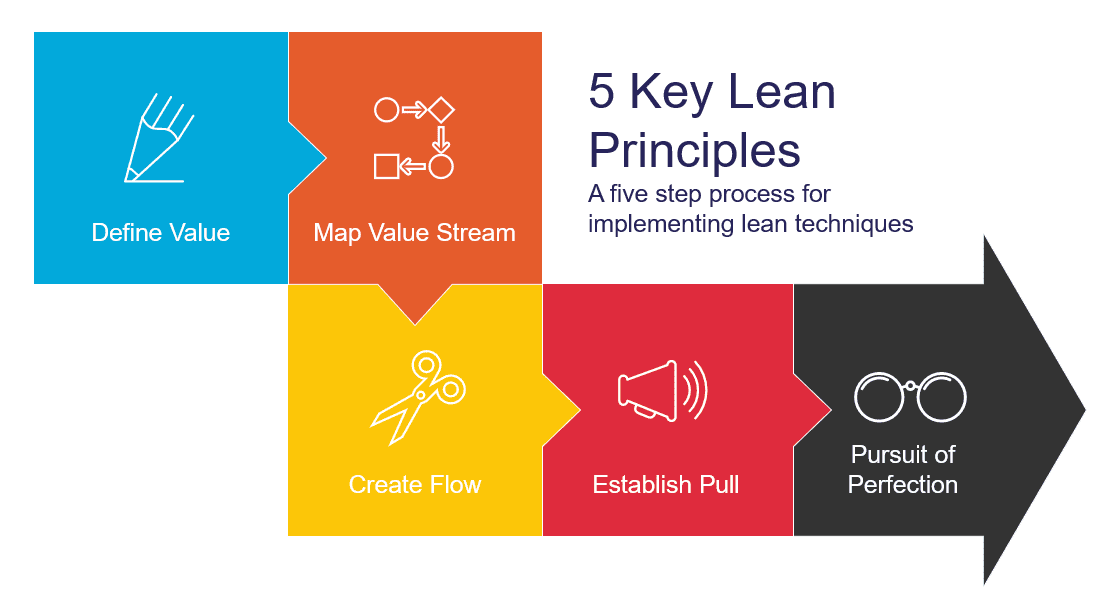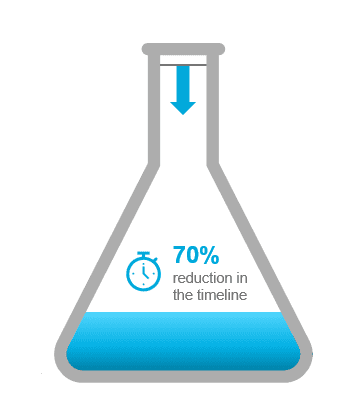Lean is a concept originating around Toyota’s manufacturing process dating back to the late 1980’s. It is commonly thought of as an Automotive Manufacturing specific approach. However, as defined by Lean.org, it “simply means creating more value for customers with fewer resources“.
Lean Process Improvement consulting is regularly applied to other industries to help change the organizational mindset to one of continuous improvement. Additionally, with methods like Lean Startup, the goal is to maximize value, and to deliver that value faster.
In 2018, a pharmaceutical client engaged MIGSO-PCUBED to adopt a Lean implementation process within their lab systems group.
Previously, lab systems implementation had been a major road block for the company. The goal of the pilot project was to reduce the timeline for implementation of new lab systems. This would allow the development team to keep up with the rapid growth of the company.
Their Lean process improvement goal involved coordinating multiple cross functional teams to implement an operative, validated system and ultimately trimming any activities that did not create customer value. MIGSO-PCUBED was responsible for working within the Pharmaceutical client and with external vendor teams to oversee the Lab System Implementation process change.
As this implementation was the first Lean process improvement change for the majority of the project team, the first hurdle was on methodology. All leads supporting the pilot project underwent Lean training. This ensured that the team leading the charge would be able to adequately support the shift mindset, and terminology, the organizational change required.
The MIGSO-PCUBED team then coordinated with each of the major stakeholder groups to build change champions. Some other organizations may refer to this step as establishing a change agent network. As the pilot would be affecting an existing process that was internally well established, change champions would be critical in securing adoption for this new process.
Prior to this initiative, the client’s lab system implementation timeline was, on average, 280 working days. Approval times and chasing signatures contributed to the long duration. If the team was to support the reduction of the timeline for new system implementation, developing a strategy and schedule detailed enough to implement the pilot system and broad enough to be replicated for future systems, was paramount.
Did you know that we are often called in to deliver services in Lean process improvement consulting as part of our project management efforts?
MIGSO-PCUBED has partnered with the University of Hertfordshire’s racing team for over 10 years. In their 20th year of competition, our consultants focused on introducing both Agile and Lean Project Management techniques, through training and mentoring, as a method to help them visualize their process towards delivering a vehicle and further drive them to success.
Check out the article on how incorporating Agile and Lean methods can help you to learn more.
MIGSO-PCUBED worked with the client to apply lean concepts to the schedule. Taking the 5 key principles of lean, graphic below, the team started by mapping out the entire end-to-end process looking for ways to improve the overall timeline. After mapping the As-Is Process, the team sought ways to eliminate waste and trim actions without omitting any required tasks. In one example, a simple shift of a task “Moving system configuration” up in the process, improved the overall flow and provided for a huge win.

In addition to adopting key Lean principles on the project, the client assigned a Project Manager for its execution phase. Previously there were no PMs assigned to theses types of projects. The role of the PM was to ensure that the lab systems implementation project stayed as close to their approved timeline as possible.
To accommodate the growth of the organization, the client was looking for a step change in the delivery lead time for lab systems, to introduce new capacity in validation. On a day to day basis the team proactively looked for ways to reduce the time to delivery. All necessary stakeholders were made aware of upcoming validation items that would need review, approval and sign-off to ensure that these happened in a timely manner.
As a result, the pilot lab system implementation was completed in 78 working days, a near 70% reduction to the timeline. In addition, this exceeded the internal project goal by a full work week. By far, “the largest influence on the timeline reduction, was having a dedicated Project Manager”. And the team’s utilization of Lean process improvement principles on their project has positioned the Lab Systems Team to handle an increased workload and scale with the company’s desired growth rate.

Through their leadership, the MIGSO-PCUBED team facilitated translating the lessons of Lean into the healthcare field by reworking the current process and drastically cutting historical approval times. This required close work with the client to fully understand their systems and needs, in order to change the underlying company culture. It is ultimately this contribution to cultural change and continuous improvement that is a foundational measure of accomplishment in a Lean transition.
The largest influence on the timeline reduction, was having a dedicated Project Manager
Loved what you just read?
Let's stay in touch.
No spam, only great things to read in our newsletter.
We combine our expertise with a fine knowledge of the industry to deliver high-value project management services.
MIGSO-PCUBED is part of the ALTEN group.
Find us around the world
Australia – Canada – France – Germany – Italy – Mexico – Portugal – Romania – South East Asia – Spain – Switzerland – United Kingdom – United States
© 2024 MIGSO-PCUBED. All rights reserved | Legal information | Privacy Policy | Cookie Settings | Intranet
Perfect jobs also result from great environments : the team, its culture and energy.
So tell us more about you : who you are, your project, your ambitions,
and let’s find your next step together.
Dear candidates, please note that you will only be contacted via email from the following domain: migso-pcubed.com. Please remain vigilant and ensure that you interact exclusively with our official websites. The MIGSO-PCUBED Team
Choose your language

A monthly digest of our best articles on all things Project Management.
Our website is not supported on this browser
The browser you are using (Internet Explorer) cannot display our content.
Please come back on a more recent browser to have the best experience possible
